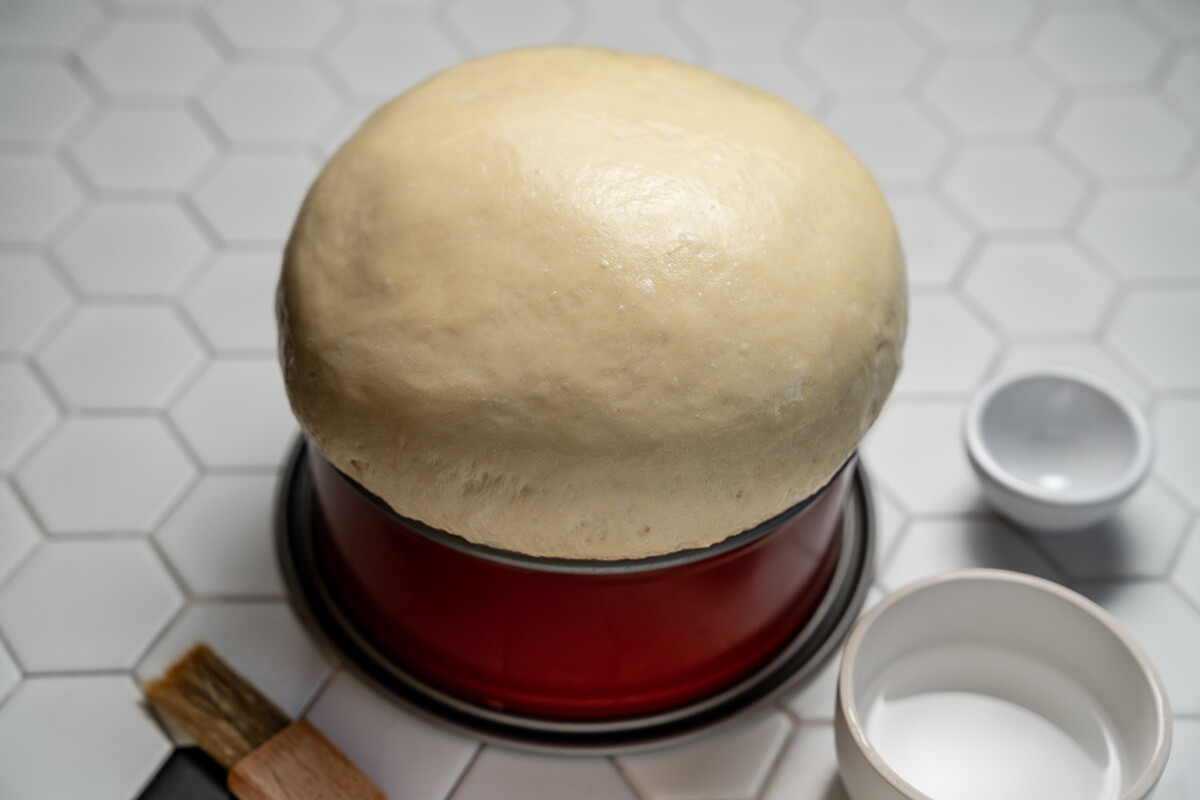Airy wheat Saratov kalach resembles Easter bread (RECIPE)

Saratov kalach is the pride of the region and a special kind of wheat bread. Back in the 19th century, Saratov was famous as the empire’s bread capital. A number of massive hydro-powered mills were built near the waterfront by the Volga River, grinding millions of tons of flour.
The recipe for this kalach is believed to have first appeared in Saratov in the middle of the 19th century at a local factory that was owned by the Moscow baker Dmitry Philippov. Starting in 1856, each day several pieces of Saratov kalach were specially delivered by rail to the imperial court in St. Petersburg.
Only in 1959, however, did the first official Saratov kalach standard appear. The average kalach used to be huge, weighing 2.5 kilos, but now there’s a kalach baked at 700 grams.
An important condition for the production of Saratov kalach is the use of durum wheat flour. Long ago this type of wheat, called "beloturka", was grown only in the Saratov region.
Over time, the recipe has changed slightly. Margarine was added to the dough, and then later, vegetable oil. Also, it was common to add liquid yeast or sourdough to the dough in order to enhance the bread’s porosity and the sour taste.
Although Saratov kalach resembles an Easter kulich, it is made with vegan dough.
The loaf itself is airy and porous, with a ruddy crust on top that’s smeared with a soda mixture. But often, even in production, the crust breaks, which does not make the loaf any less attractive or tasty. There is also another type of crust coating: liquid dough with lumps.
Softness and elasticity have always been an important quality of Saratov kalach. It is said that in the past they used to have girls literally sit on the kalach to test its quality. If the kalach had been prepared properly then quickly it sprung back to its original shape.
Saratov kalach stays fresh for a long time and won’t go stale. It’s recommended to store it in the refrigerator.
Baking delicious bread is always a time-consuming process. For this recipe, you will certainly need to be patient.
Ingredients per 18 cm mold (930 g):

Dough:
- Wheat flour (14% protein) – 285 g
- Semolina flour – 285 g
- Water – 340 ml
- Yeast - 7 g
- Sunflower oil - 12 ml
- Sugar - 14 g (1.5 tsp)
- Salt - 8 g (1 tsp)
Coating:
- Water - 50 ml
- Salt - 2.5 g (pinch)
- Soda - 1.5 g (pinch)

Preparation:
1. Mix the two types of flour.
2. For the sourdough, measure out 250 g flour and 220 ml water. Dissolve the yeast in warm water. Mix the flour and water with the yeast until completely combined. Allow to stand at room temperature for 7 hours. I left it at 19℃ for 12 hours. The sourdough should start to bubble.

3. Dissolve the salt and sugar in 120 ml of warm water.

4. Add oil and water with the salt and sugar to the sourdough.

5. Mix with the remaining flour (320 g) until completely combined and leave for 15 minutes.

6. Then knead the dough until smooth in a food processor for 15 minutes. The dough should not stick to the walls of the bowl.

7. Form the dough into a ball, cover and leave in a warm place for 30 minutes.

8. Punch down the dough, fold, shape into a ball again, cover and leave in a warm place for another 30 minutes.

9. Punch down the dough, fold it into an envelope, form a ball and place it in the baking mold. I only greased the bottom. I left the walls dry so the dough would rise more easily.

10. Cover and let rise for about 60 minutes in a warm place. Make sure the cap rises well, but does not burst.

11. Cover the bread with the mixture of soda, salt and water.

12. Place in an oven preheated to 210℃. Pour a third of a cup of water on the bottom tray of the oven. The steam is needed to form a thin crust. After 15 minutes, lower the temperature to 200℃ and bake for about 30 more minutes.

13. Cool the loaf.

14. You can cut it after an hour. It is very elastic – rises back up after pressing.

15. It is better to serve on the same day. But it is still soft on the next day.

READ MORE: How to bake the most delicious wheat bread - Moscow Kalach (RECIPE)

